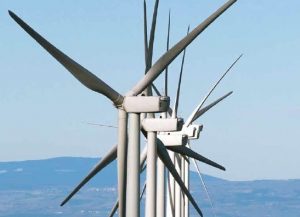A new report from Lawrence Berkeley National Laboratory has been released titled “Revealing the Hidden Value that the Federal Investment Tax Credit and Treasury Cash Grant Provide to Community Wind Projects.”
The global financial crisis of 2008/2009 has, in several respects, been a blessing in disguise for community wind project development in the United States. In addition to creating much-needed slack in the supply chain, the financial crisis spawned two major stimulus packages in the U.S. that, in combination, have fundamentally reshaped the federal policy landscape for wind power in general, and for community wind projects in particular. Most notably, qualifying wind projects can now, for a limited time only, choose either a 30-percent investment tax credit (ITC) or a 30-percent cash grant in lieu of the production tax credit (PTC) that wind has historically received.
It stands to reason that community wind, which has had more difficulty using the PTC than has commercial wind, may benefit disproportionately from this newfound ability to choose among these federal incentives. This report confirms this hypothesis. On the basis of face value alone, the 30-percent ITC or cash grant—both of which depend on the size of the investment rather than on the quantity of power produced—will be worth more than the PTC to many community wind projects, which on average may cost more or generate less than their commercial counterparts.
Just as importantly, however, and not to be overlooked, are a handful of ancillary benefits that accompany the 30-percent ITC and/or cash grant, but not the PTC. Many of these ancillary benefits—including relief from the alternative minimum tax, passive credit limitations, and certain PTC “haircuts”—circumvent barriers that have plagued community wind projects in the United States for years. This report demonstrates that these ancillary benefits could, in aggregate, be worth even more to a typical community wind project than the greater face value provided by the 30-percent ITC or cash grant relative to the PTC.
Quantitative analysis of these ancillary benefits also informs the development of a policy agenda for community wind, by revealing which of these benefits are most valuable to the sector. For example, the analysis highlights the importance of the 30-percent cash grant—and particularly the relief that it provides from passive credit limitations—for passive investors in community wind projects. In this light, seeking to extend the very limited window of opportunity for the 30-percent cash grant may be a logical top policy priority for the community wind sector. The full report can be downloaded from eetd.lbl.gov/EA/EMP/re-pubs.html.

























